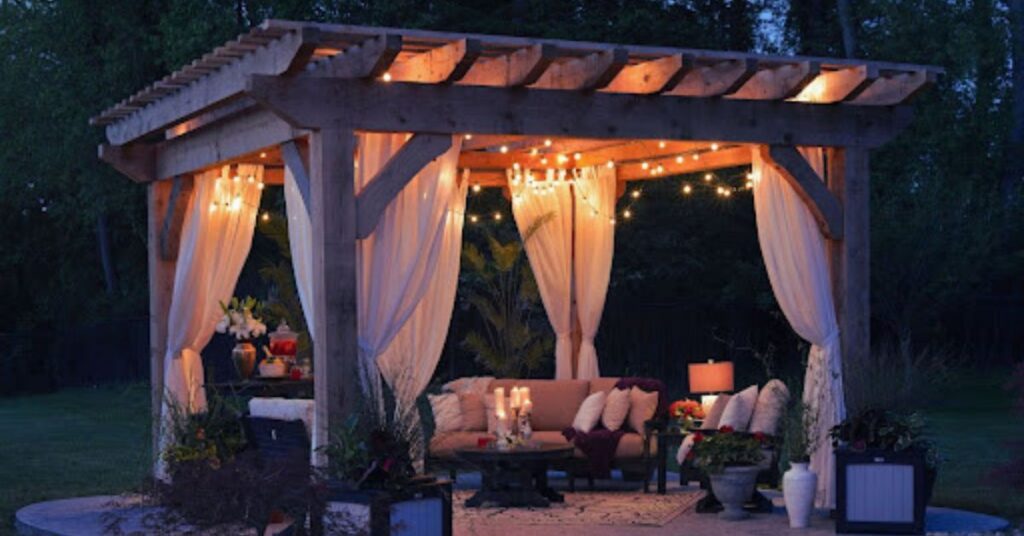Outdoor spaces like gardens, patios, and walkways can be transformed with the strategic use of different light colors. Lighting not only improves the functionality of these areas but also enhances their aesthetic appeal, creating inviting environments for relaxation and entertainment. This article explores how various light colors can be used to elevate outdoor spaces and offers tips on creating effective lighting schemes.
Creating Ambiance with Warm Light
Warm light, typically around 2700K to 3000K, is ideal for creating a welcoming atmosphere in outdoor spaces. This type of lighting is perfect for patios and seating areas where relaxation and socializing are encouraged. Soft white light color can be used in string lights, lanterns, or wall-mounted fixtures to cast a gentle glow over the space.
In gardens, warm light can highlight the natural beauty of plants and flowers, enhancing their colors and creating a serene environment. Pathways lined with warm light fixtures can guide guests through the garden, making the space feel inviting and safe.
Enhancing Visibility with Cool Light
Cool light, ranging from 4000K to 5000K, is effective for enhancing visibility and security in outdoor areas. This type of lighting is suitable for walkways, driveways, and entrances where clear, bright light is needed. Cool white LEDs can illuminate these areas, ensuring they are safe and easy to navigate.
In gardens, cool light can be used to spotlight trees, sculptures, or water features, creating focal points that draw attention and add visual interest. Using cool light for task lighting, such as over an outdoor kitchen or dining area, ensures that activities can be performed safely and efficiently. Being aware of the contrasts between soft light vs daylight helps in choosing the appropriate lighting for various areas.
Adding Drama with Colored Lights
Colored lights can add a dramatic effect to outdoor spaces, transforming them into vibrant and dynamic environments. RGB LED lights offer a range of colors that can be adjusted to suit different occasions and moods. For example, blue or green lights can create a tranquil atmosphere, while red or purple lights can add a touch of excitement and energy.
In gardens, colored lights can be used to highlight specific plants or garden features, creating a whimsical and magical ambiance. On patios, colored lights can set the mood for parties or gatherings, making the space feel festive and lively.
Balancing Function and Aesthetics
Creating a successful outdoor lighting scheme involves balancing functionality and aesthetics. It’s important to ensure that outdoor areas are well-lit for safety and usability while also creating an appealing visual effect. Using a combination of light colors and types can achieve this balance.
For instance, using warm lights for seating areas, cool lights for pathways, and colored lights for special features can create a layered lighting effect that enhances both the functionality and beauty of the space. Dimmer switches and adjustable fixtures can add flexibility, allowing you to change the lighting according to different needs and occasions.
Tips for Creating Inviting Outdoor Lighting Schemes
- Plan the Layout
Start by planning where you need light and what type of light is suitable for each area. Consider the functions of different spaces and how lighting can enhance their use.
- Layer the Lighting
Use a mix of ambient, task, and accent lighting to create depth and interest. Ambient lighting provides general illumination, task lighting focuses on specific activities, and accent lighting highlights features and creates visual interest.
- Choose the Right Fixtures
Select fixtures that are appropriate for outdoor use and complement the style of your space. Waterproof and weather-resistant fixtures are essential for durability.
- Consider Energy Efficiency
Opt for energy-efficient LED lights that consume less power and have a longer lifespan. Solar-powered lights can be a great option for pathways and garden areas.
- Experiment with Colors
Don’t be afraid to experiment with different light colors. Use warm lights for a welcoming atmosphere, cool lights for clarity and security, and colored lights for drama and excitement.
- Use Smart Lighting Systems
Smart lighting systems allow you to control your outdoor lights remotely and adjust colors and brightness easily. These systems can enhance convenience and allow for creative lighting designs.
Conclusion
The choice of light colors in outdoor spaces plays a critical role in shaping the environment, influencing how people feel and interact within the space. Warm light around 2700K to 3000K creates a welcoming atmosphere, perfect for patios and seating areas. Cool light ranging from 4000K to 5000K enhances visibility and security, ideal for pathways and entrances.
Colored lights add drama and excitement, transforming spaces into vibrant and dynamic areas. By planning the layout, layering the lighting, choosing the right fixtures, and considering energy efficiency, you can create inviting and functional outdoor lighting schemes that enhance the beauty and usability of gardens, patios, and walkways.








1 thought on “Transforming Your Outdoor Spaces with the Power of Light Colors”